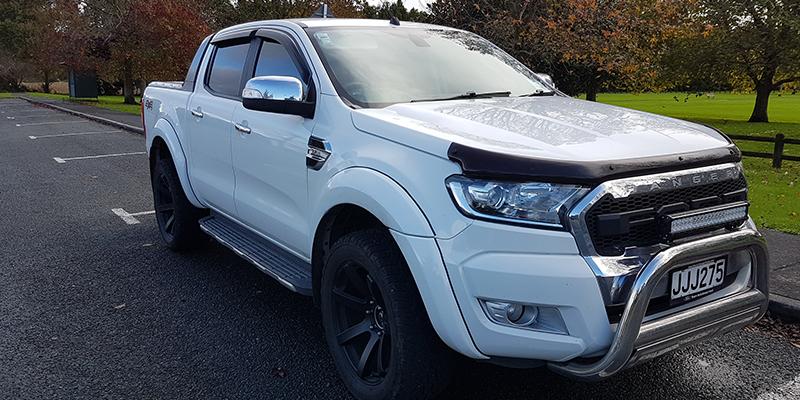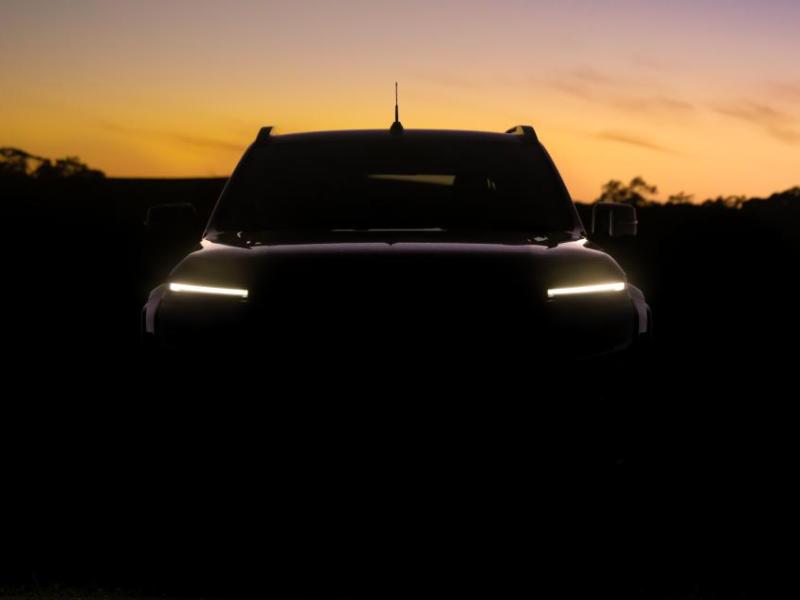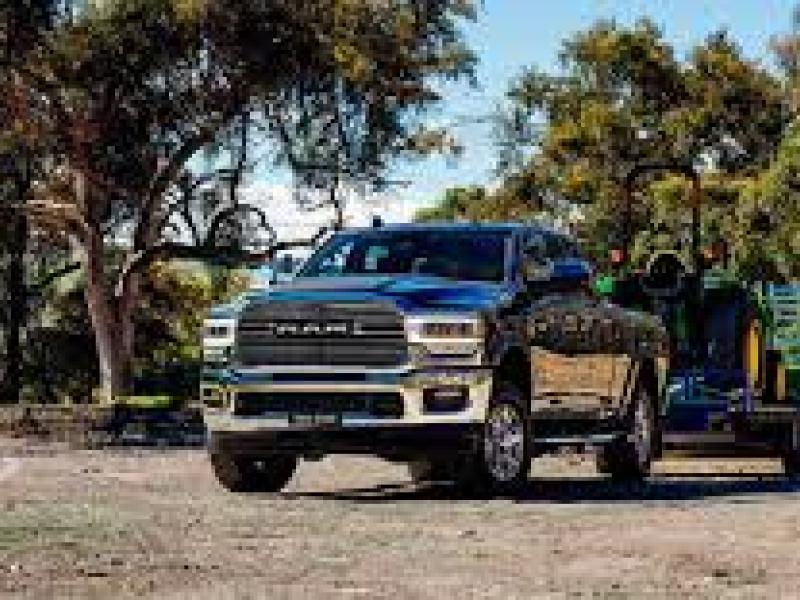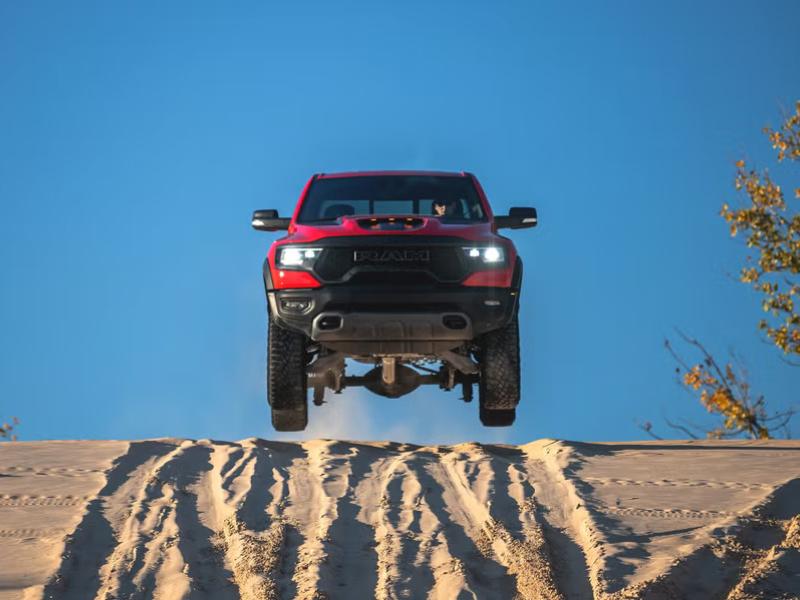With his latest Ford Ranger package, diesel tuning specialist Jason Frost of ECU Chips has proved that the two are no longer mutually exclusive.
Numbers. Everyone loves taking numbers. And Jason Frost is no different.
“Standard,” he says gesturing to the Ford Ranger XLT sitting outside his workshop,” these things make 110kW at the wheels. Now this one puts out 150kW at the wheels.”
Like a lot of Kiwis (the Ranger is not only the top selling ute here, it is also the best-selling individual vehicle by quite some margin) Jason, the man behind NZ-wide specialist diesel tuner ECU Chips, loves his Ford Ranger – with one fairly major reservation.
“It’s an awesome truck,’ he confirms. ‘They drive beautifully, especially on a long trip. You can carry things in them, tow a big boat all day long, but…………I don’t care what anyone else says, they’re gutless!”
Or at least they are to someone like Jason who rates BMW’s X5 as the benchmark for all other diesel-fuelled daily drivers.
Which is why so much of his work time of late has been focused on improving both the outright performance and drivability of Ford’s top-selling local ‘truck.’
Power AND Economy!
“What I am trying to do,” he says.” is make a solution for business owners so that we can give them a vehicle that looks, feels and drives exactly like a factory one. So that it is not noisy, and you can’t hear a whole lot of hissing and carrying on because you have modified it heavily. But it makes more and better power and torque and – largely because of the fact – is way nicer and much more involving, to drive.”
You won’t find a Jason Frost-tuned diesel-powered ute, truck or even tractor trading ultimate performance for a thick trail of black smoke either.
“You can do that,” he admits, “you can chuck a set of injectors on it and you will have a coal burner but, honestly, who wants that? Factory injectors mean good fuel economy. Swap them out for bigger injectors and you lose your fuel economy.”
Jason’s latest daily-driven ‘test bed’ is a white PX2-model XLT auto double cab with a set of larger diameter aftermarket alloy wheels and chunky Cooper Tires, tyres. Here in Auckland you literally see hundreds like it every day, most being driven - on the seal – by their tradie, or otherwise self-employed owners.
Of all the common-rail turbo-diesel engines the 3.2 litre in-line five cylinder Ford is one of, if not, the best. Like any production powerplant, however, compromises have been made. It might be one of the only current ute engines to be equipped ex-factory with the more efficient piezoelectric diesel injectors, but the standard (small) intercooler and (restrictive) turbo limit the gains in power and torque a tuner can make.
A good place to start
That said, Jason says a good place to start is with a tune and an aftermarket intercooler.
“The idea there, he says, “is simply to increase air density by cooling the charge.”
“Once you have done that, you can look at upgrading the turbo and exhaust.”
And therein lies a lesson in modern day fuel and engine management which Jason is only too happy to share.
“Making modern engines last is all about heat management. Because at the factory they are so focused on emissions, most modern engines run really hot.
By the simple expedient of changing thermostats and running the large truck engines he also tunes, cooler, Jason has been able to make ‘huge gains’ both in performance and in the working life of engines.
It is this experience he is now bringing to bear on everyday turbo-diesel ute engines like the Ranger one.
With its large but expertly hidden intercooler and the Aussie-modded standard turbo (larger compressor and turbine wheels and a modified intake) plus (much) freer-flowing three-inch dia. stainless steel turbo-back exhaust, Jason’s ‘work’ ute could hardly be a better real-world advertisement for his work.
Though it starts and idles just like an unmodded factory Ranger you can’t help but notice an immediate spring in its step the minute you take off. With the auto transmission doing the shifting power delivery is relentless, with not even a hint of lag and absolutely instant response to what your throttle foot if doing.
More involving to drive
The engine certainly feels livelier and both the power and torque spreads wider and with less obvious steps and/or troughs, making an ECU Chips-modded Ranger both easier and much more involving (think less like a work vehicle and more like a sporty sort of SUV) to drive
That’s not all either. Last time I drove – and wrote about – one of Jason’s ‘work trucks’ it was a manual Ranger. I was impressed then, even though Jason reckoned there was more to come when he added a water injection system to further cool the charge.
This time we were out for a drive on a hilly back road deep in Auckland’s Waitakere Ranges when, out of the blue Jason turned to me and said, ‘when we get to the bottom of the hill put your foot down.’
Just as I was about to, he flicked a rocker switch and…the Ranger literally jumped ahead as Jason, broad smile plastered across his face, chuckled and said….’you like that? That’s what water injection can do!
“Imagine,’ he continued, “that you do a lot of towing and you just need a bit more go on a big hill. Not everyone needs it but you can feel the difference, can't you?”
Cool idea!
While I was aware of the concept of water injection, I had never really bothered finding out what it actually is and does. Good thing then that I had Jason sitting beside me.
The system he has developed is based around a small plastic container (about the size of a typical windscreen washer reservoir) tucked in our of harm’s way on the left hand side of the ute tray.
He fills this with water and a dash of methanol (up to 40%) and when he feels the need, pumps the fluid via a tube and fitting into the Ranger’s intake manifold.
“By injecting water into the intake manifold it increases the air density so you can get a lot more air into the engine,” he explains. “Cooler, denser air obviously helps the fuel burn better because you’ve got more oxygen in the burn. The methanol is there for the same reason. When you add it you get a mild increase in power, but also the water just seems to work better when it has got some methanol in it.”
There’s a good reason Jason highlights towing when talking about a Ranger as well.
“What we have found,” he says,” is that towing ability is greatly improved with low intake and exhaust temperatures. Adding the water really helps do this which means this Ranger will hold its power even on the big hills unlike the stock one which cuts power when the factory ECU decides that the intake air temperature is getting too high.”
If he wanted to, too, Jason says he could easily find ‘another 20 to 30 kWs.’
“Tuned at this level (150kW) all I would need to do is put bigger injectors in it and I could take it up to 175/180kW at the wheels. The turbo would support it but you would literally be blowing a lot more hot air, all the temps would be higher and you’d be getting near your limits.
Works so well
“The reason the 150kW tunes works so well is because we are not maxing out the turbo. There is still 20 or so kW at the wheel left in it so it makes its boost easily without generating excessive heat.
“At this (150kW) level, in fact, all my temps – intake and exhaust – are low but my air/fuel ratios really, really, high, something like 30 percent higher (meaning it is running considerably leaner) than that of a standard Ranger.”
Is that a problem?
On the contrary, says Jason.
“Your fuel contamination is way less, and the piston crowns are not getting as hot because the charge is cooler, so what we are doing is generating more power but not more heat which is why the temps stay so low.”
Weapon’s grade
And I can’t help but believe him. Should you ‘feel the need for speed’ Jason’s modded Ranger is weapons-grade. Put your foot down (and better still) hold it down and it sucks the horizon towards you with an urgency that makes grown men go strangely silent….then burst out in a bout of schoolgirl-like giggles…………..
Yet at the same time, when all you want to do is get from A to B the way the engine delivers its new-found power and torque will have you making favourable comparisons with vehicles otherwise way above your pay grade.
So. If you own a Ranger (or any other contemporary turbo-diesel-powered ute, station wagon or SUV) and you are thinking about unleashing some more of its latent performance/efficiency/economy potential, you owe it to yourself to check Jason and his work out.
These days the ECU Chips’ Facebook page (www.facebook/com/ecuchips.co/nz/) is probably the best place to start. The company also has a website (www.ecuchips.co.nz) and Jason is not averse to you simply getting on the blower (0-9-416 5444) and having a chat.
To read every story in the July 2018 issue of NZ4WD go to Zinio.com (June 15) or purchase your own hard copy at the Adrenalin store.






